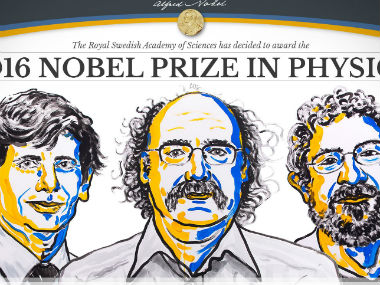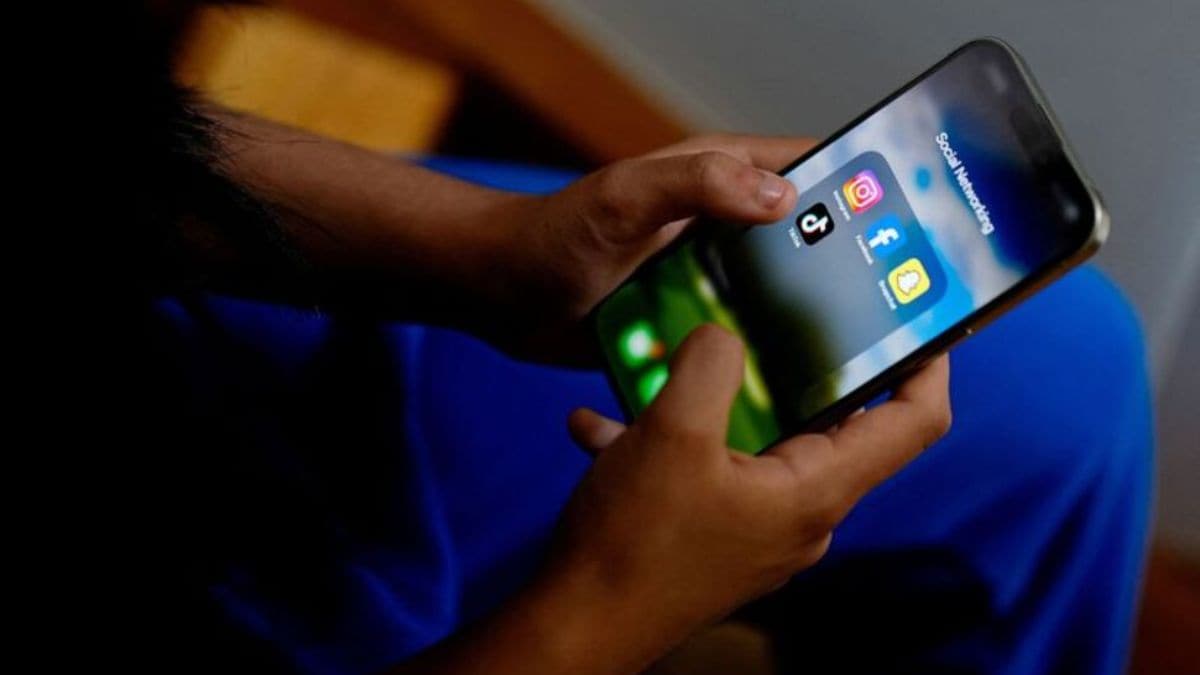Stockholm: The Nobel Physics prize was the second of the awards to be given away, on Tuesday, to a Birtish trio — scientists David Thouless, Duncan Haldane and Michael Kosterlitz for revealing the secrets of exotic matter. Thouless, 82, is professor emeritus at the University of Washington in Seattle. Haldane, 65, is a professor at Princeton University, and Kosterlitz, born in 1942, teaches at Brown University in Providence, Rhode Island. The laureates will share the eight million Swedish kronor (around $931,000 or 834,000 euros) prize sum. Thouless won one-half of the prize, while Haldane and Hosterlitz share the other half. “This year’s laureates opened the door on an unknown world where matter can assume strange states. They have used advanced mathematical methods to study unusual phases, or states, of matter, such as superconductors, superfluids or thin magnetic films. Thanks to their pioneering work, the hunt is now on for new and exotic phases of matter,” said the Nobel jury. They used topological Physics concepts for their research. Topology, in which the three laureates specialise, is a branch of mathematics that investigates physical properties of matter and space that remain unchanged under deforming forces, including stretching. Topology actually describes properties that only change step-wise. Superconductivity is when electricity flows through a material without experiencing any resistance or losing energy as heat, while suprafluidity is when a fluid flows without any friction.
Britons win #NobelPrize for work on 'exotic' matter, explained with bagel: https://t.co/tWNn7A7pm1 pic.twitter.com/H1dhjjril6
— Reuters (@Reuters) October 4, 2016
In the 1970s it was believed that superconductivity or suprafluidity could not occur in thin layers. Michael Kosterlitz and David Thouless invalidated this by demonstrating that superconductivity could take place at low temperatures. In the 1980s, Thouless explained a previous experiment with thin electrically conducting layers in which conductance was measured as integer steps, then showing that integers were topological. And Duncan Haldane made the discovery that properties of chains of small magnets could be understood using topological concepts in some materials. A topologist is a person who cannot tell the difference between a coffee mug and a donut — so goes a joke about a little-known scientific field crowned Tuesday with a Nobel Physics Prize. The quip describes it perfectly: topology explains how a material’s shape can be completely deformed into new one without losing its core properties. In the metaphor, the mug and the donut are one and the same. If they were made out of rubber, one could be twisted and stretched into the shape of the other without changing its essence. The two are considered topologically equivalent as each has a hole — the ear of the mug and the centre of the donut. “You can put your finger through the hole in a teacup handle, but you can’t put it through a potato, so these are two different categories of topological objects,” explained Manuel Asorey of the University of Zaragoza’s department of theoretical physics. A strange universe of fundamental shapes long existing only in mathematics, the field was introduced into the physics realm just a few decades ago. Indeed, in the mid-20th century theoretical physicist George Gamow said topology was one of two mathematical concepts, along with number theory, that would never apply to physics. Gamow was wrong. [caption id=“attachment_3035310” align=“alignleft” width=“825”] Scientists David Thouless, Duncan Haldane and Michael Kosterlitz declared winners of Nobel Physics prize. Image courtesy: @NobelPrize/Twitter[/caption] Today, topology has burgeoned into a wide range of physics sub-fields promising a host of practical applications ranging from supercomputing to superconductors. The key virtue of topological materials is that they “remain robust regardless of the deforming forces being applied to them,” said David Carpentier, a physicist at France’s CNRS research institute. By shaping materials into “topological states,” scientists hope one day to transport energy or information farther and fastest than possible today. It is hoped that new materials emerging from this research will use much less electricity. But they pose a high risk of overheating, which is where topological insulators with an inherent stability would come in very handy. The jury said their pioneering work “has boosted frontline research in condensed matter physics, not least because of the hope that topological materials could be used in new generations of electronics and superconductors, or in future quantum computers.” It holds exceptional promise for quantum computing and tiny quantum devices as topological states can transport energy and information without overheating, unlike traditional quantum mechanics. Quantum computers, still on the drawing board, promise superfast processing speeds using the properties of subatomic particles that exist in more than one state at once. Kosterlitz, speaking to reporters in Helsinki where he was working, joked: “I’ve been waiting for my desk-top quantum computer for years and it’s showing no signs of appearing…At the risk of making a bad mistake, I would say that this quantum computation stuff is a long way from being practical.” Haldane said his prizewinning discovery had been serendipitous. “Most of the big discoveries are done that way: you stumble on it and you have the luck to recognise you have something very interesting,” he told reporters at the Nobel press conference via videolink. “It’s so surprising that it takes a while to grip, but when you see it you realise why no one had seen it before.” “The next step will be to create these objects in the lab and try to manipulate them, performing very simple operations,” Nathan Goldman of the Free University of Brussels said. “Two years ago, I would have said it would take at least two decades to see something on the supermarket shelf” resulting from topology research, Asorey said. “Today, I would say one decade, maybe less.”


)

)
)
)
)
)
)
)
)



